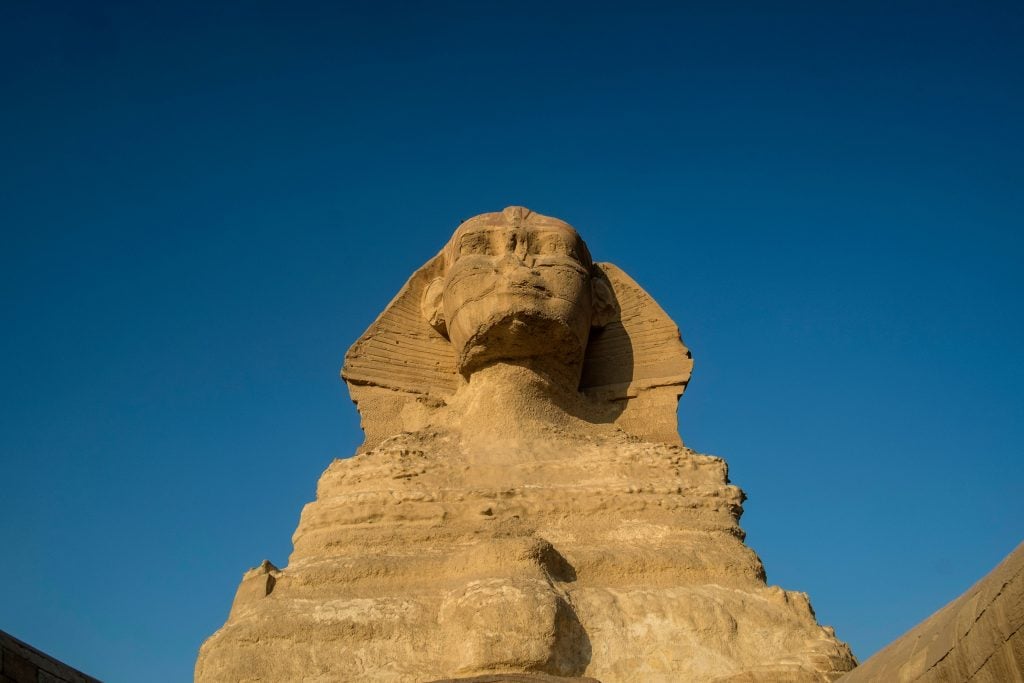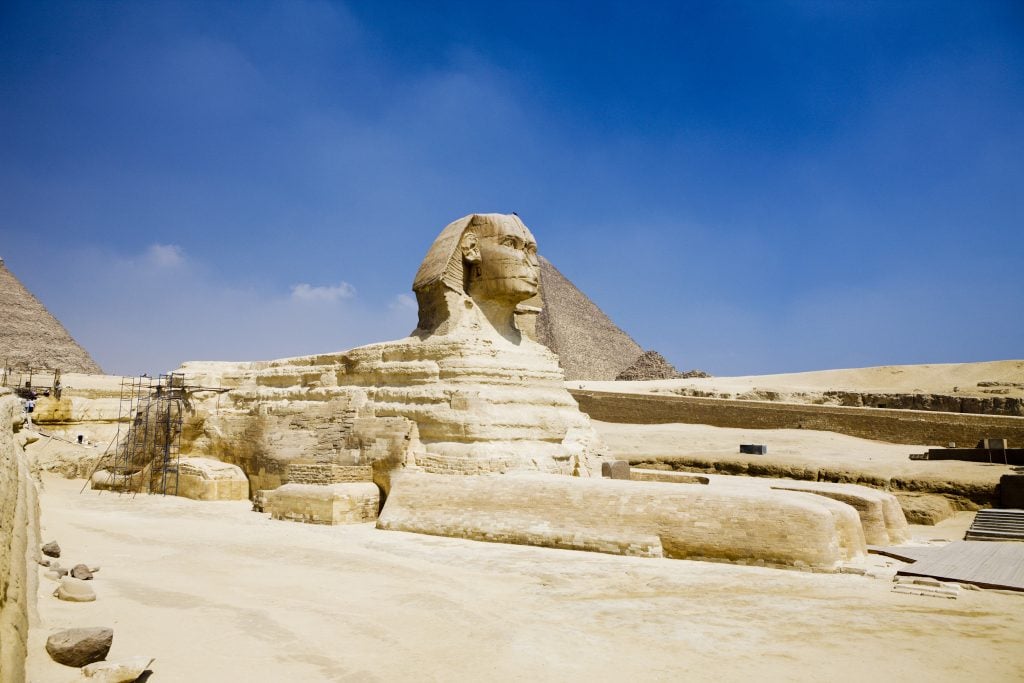Archaeology & History
The Hunt: What Happened to the Great Sphinx’s Nose?
The mystery of the Egyptian statue's missing nose has fascinated people for centuries.

Much like the desert winds that perhaps helped shape it, conspiracy theories swirl around the Great Sphinx guarding the Giza plateau—especially regarding how the winged lion’s human head lost its nose. One enduring hypothesis blames Napoleon Bonaparte’s troops for blowing the snout off during target practice. While that conspiracy’s long-debunked, it persists in popular culture. Director Ridley Scott knowingly depicted the myth in last year’s Napoleon biopic, without sacrificing any of his film’s critical acclaim. However, Egypt’s Dr. Zahi Hawass told Britannica, “We have, really, to say to everyone that Napoleon Bonaparte has nothing to do with destroying the Sphinx’s nose.”
Napoleon’s 1798 battle didn’t even take place on the Giza plateau, but 10 miles north at Imbabah. Some theories have posited that storms and earthquakes shook the Sphinx’s nose from its face. Others squabble over which regional conflict (if not Napoleon’s Battle of the Pyramids) led to the nose’s destruction. In 1990, J.P. Lepre noted that “the figure was used as a target for the guns of the Mamluks,” who were actually Napoleon’s opponents.
The French emperor did, however, lay eyes on the Sphinx’s face when he arrived in Giza, with many soldiers, painters, and engravers in tow. “Thousands of years of history are looking down upon us,” he reportedly exclaimed beneath the monument’s gaze. Napoleon didn’t respect borders, but he did respect history. The Waterloo Association called the lingering accusations against him “particularly unjust because the French general brought with him a large group of ‘savants’ to conduct the first scientific study of Egypt and its antiquities.” The resulting Orientalist survey ignited an Egyptian fervor back in Europe.
Primary materials prove the nose removal predated Napoleon, too. Danish naval captain Frederic Louis Norden’s sketch from 1738 depicts the Sphinx without its central facial feature. What’s more, French naturalist Dr. Pierre Belon visited the Sphinx in 1546, writing that it had sustained damage and “no longer [had] the stamp of grace and beauty so admired by Abdel Latif in 1200”.

The Great Sphinx of Giza. Photo by Reinhard Dirscherl/ullstein bild via Getty Images
Medieval Arab scholars such as al-Maqrīzī pin the damage on Muhammed Sa’im al-Dahr, a 12th-century Sufi Muslim from a respected Cairo convent, who was allegedly angry that peasants used the Sphinx to entreat Abul Hol (the Arabic name for the sphinx) into helping their harvests. Removing an idol’s nose was an accepted method to suffocate spirits inside. Still, the details remain up for debate. Hawass believes that al-Dahr acted alone. Others claim he hired men to desecrate the Sphinx. Most experts, however, agree the great statue’s nose came off with a chisel. It is also generally accepted that al-Darhr’s actions got him killed by angry villagers. Sadly, the nose itself has likely crumbled into the desert.
The Hunt explores art and ancient relics that are—alas!—lost to time. From the Ark of the Covenant to Cleopatra’s tomb, these legendary treasures have long captured the imaginations of historians and archaeologists, even if they remain buried under layers of sand, stone, and history.





